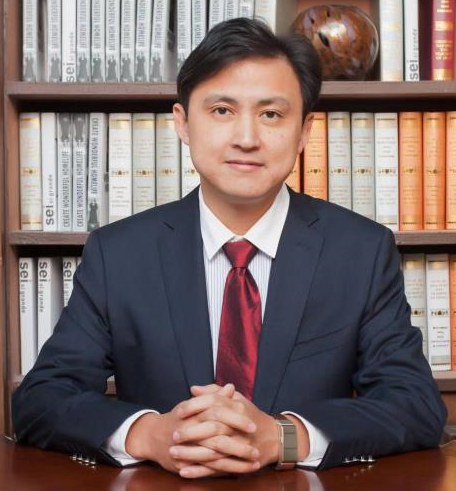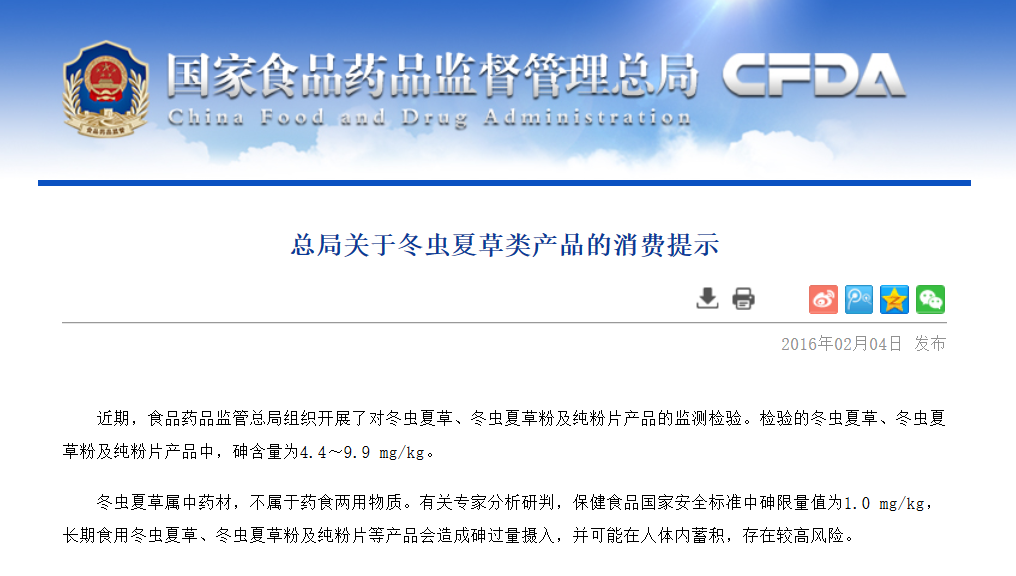 | [中医][图文]清肺排毒汤正式处方来 |
 | [中医][组图]中医抗疫!广州市第八 |
 | [中医][组图]治疗不孕不育、颈椎病 |
 | [中医][图文]中药国际化重大突破: |
 | [中医]国家中医药局:这7个资格证是 |
 | [中医][图文]沉痛悼念国医大师邓铁 |
 | [中医]国务院修改《中药品种保护条 |
 | [中医][组图]科学家尝试用中药治疗 |
基于《瘟疫论》理论探讨新冠肺炎的辨证施治方法
|
文章导读:2019年12月我国武汉爆发的新冠肺 炎,具有较强的传染性和流行性,属于中医学“瘟疫”范畴,严重威胁人类的生命健康。面对这一突发的公共卫生事件,本文基于《瘟疫论》理论,从临床实际出发,对新冠肺 炎的发病特点、传变以及辨证论治进行了解析。根据此次疫情的特点,新冠肺 炎的病因为感受“戾气”,病机为疫毒遏湿,其传变遵循《瘟疫论》“表里九传”规律,可分为顺传与逆传,病程具有一定的规律性与阶段性。初期邪伏膜原、疫毒遏湿,应开达膜原、祛湿化浊、宣透疏利;中期病邪可顺传于表,此时应当使用辛凉解表之剂,通过战汗透邪,使邪随汗出,若湿毒入里化热,致肺络受损,腑气不通,里实热结,当通腑泻热,攻下逐邪,给邪以出路;若失治、误治、病邪太过,可致病邪内陷心包,造成神昏谵语、躁扰不宁、四肢厥逆、脉微欲绝等内闭外脱的危重表现,治疗上注意攻补兼施,开闭固脱;恢复期,由于余邪未尽,且热病易伤阴耗气,治疗上不仅要预防余邪反复,更要滋阴补血,恢复正气。在疾病治疗过程中,吴又可提出“祛邪为第一要义、忌妄汗下法、顾护脾胃”三大法则。《瘟疫论》理论对“瘟疫”的病因病机、传变和辨证施治有着系统的认识,为后代战胜历次瘟疫提供了宝贵经验,这对于此次新冠肺 炎的防治同样具有重要的意义。本文《基于《瘟疫论》理论探讨新冠肺 炎的辨证施治方法》由北京中医药大学中医学院研究人员张萌萌、吴琪、张新雪、赵宗江发表于《中国实验方剂学杂志 》,由于版权原因,中医人网仅转载部分以飨读者。 |
The outbreak of corona virus disease 2019 (COVID-19) in Wuhan, China, in December 2019, is highly contagious and epidemic, and belongs to the category of "plague" in traditional Chinese medicine, which seriously threatens human life and health. In the face of this sudden public health event, based on the theory of "Wenyilun", this paper analyzes the onset characteristics, transmission, and syndrome differentiation-based treatment of COVID-19 in clinical practice. According to the characteristics of this epidemic, the pathogeny of COVID-19 is "epidemic pathogenic factors", and the pathogenesis is that the epidemic suppresses the dampness. Its transmission follows the regularity of "nine transmissions between exterior and interior" recorded in Wenyilun, which can be divided into sequential transmission and reverse transmission. The course of the disease has certain regularity and stages. In the early stage, the pathogen hides in the pleurodiaphragmatic interspace, and the epidemic suppresses the dampness; the treatment shall reach the pleurodiaphragmatic interspace, clear the dampness and turbidness, diffuse the lungs and dredging the lung meridian. In the middle stage, the pathogen can be transmitted to the exterior; the treatment shall be pungent in flavor and cool in property and could relieve the exterior syndrome, so as to remove the pathogen by shivering and sweating. If the dampness toxin enters the interior and be transmitted into the heat, and caused damage to the lung meridian, obstruction of Qi in the lungs, interior excess and heat accumulation, the treatment shall dredge bowel and purge heat, and expel the pathogen out. Any delay in treatment, mistreatment or excessive pathogen can lead to pathogenic invasion into the pericardium, and cause delirium, dysphoria, reversal cold of limbs, barely palpable pulse and other critical manifestations of internal blocking causing external depletion. The treatment shall focus on both attack and supplement, open blocking and relieve depletion. In the recovery period, due to the residual pathogen and the Yin and Qi impairment caused by fever, the treatment shall prevent the recurrence of the residual pathogen, nourish Yin and blood, and restore the vital energy. During the treatment, WU You-ke put forward three principles of "removing the pathogen as the priority, and then avoiding false sweating, and caring for the spleen and stomach". The theory of Wenyilun has a systematic understanding of the pathogeny, pathogenesis, and syndrome differentiation-based treatment of "the epidemic", and provides valuable experience for fight against plagues in later generations, which is also of great significance for the prevention and treatment of COVID-19.
……
2 基于《瘟疫论》理论对新冠肺炎的认识
2.1 发病
2.1.1 病因
根据《新型冠状病毒感染的肺炎诊疗方案(试行第七版)》[3],新冠肺炎初期以发热、干咳、乏力为主要临床表现。古人一直对瘟疫的病因进行不断的探讨,《黄帝内经·素问》说:“夫百病之生也,皆生于风寒暑湿燥火,以之化之变也”[10],“六淫”指风、寒、暑、湿、燥、火六种对人体有害的异常气候,当人们受到这种反常气候的影响,就会患病。而新冠肺炎具有较强的传染性和流行性,人群普遍易感,符合吴又可所提出的“此气之来,无论老少强弱,触之者即病”“邪自口鼻而入······邪气所着,有天受,有传染,所感虽殊,其病则一。凡人口鼻之气,通乎天气”[11],病邪不仅可于自然界中感染,也可以通过人与人之间相互传播,且并非由皮毛腠理受邪,而是通过口鼻之呼吸道传播。所以新冠肺炎本质为吴氏所言瘟疫,病因为感触天地之间一股异气所生,即所谓的“戾气”,自然界一种有形物质,而非六淫,即“夫温疫之为病,非风、非寒、非暑、非湿,乃天地间别有一种异气所感”。
2.1.2 病机
中医追求“审证求因”,即根据疾病目前的临床表现,推出导致疾病的原因。新冠肺炎中期、后期舌苔白腻或黄腻,并伴有口渴不欲饮水、乏力、纳差、腹胀等症状,是体内有湿邪的临床表现。“瘟疫初起,邪气盘踞于中,表里阻隔,里气滞而为闷,表气滞而为头痛、身痛”[12],“戾气”入侵人体后,结聚在体内膜原部位,使体表与内里互相阻隔,气机不通,影响了水湿的运化,再加上我国武汉降水多,湿度大的环境因素,所以考虑本病病因属性为戾气所致的“湿毒”。湿毒入里,气滞湿停,郁而化热。病情继续发展,毒热成瘀,则高热,喘息不能平卧,口唇紫绀,面色藜黑。邪盛日久,正气虚耗。故本病的病机可概括为湿、热、毒、瘀、虚。
2.1.3 病位
人体感受“戾气”后,自口鼻而入,伏于表里之间的膜原部位,正如《瘟疫论》中“邪从口鼻而入,则其所客,内不在脏腑,外不在经络,舍于夹脊之内,去表不远,附近于胃,乃表里之分界,是为半表半里”[9]。因膜原为三焦之门户,湿毒郁闭气机,化热上炎即可伤肺[13],且“天气通于肺”,肺卫主一身之表,开窍于鼻,疫毒自口鼻而入肺最易受之,《瘟疫论·杂气论》云:“适有某气专入某脏腑经络,专发为某病,故众人之病相同······所患之病纤悉相同,治法无异”[14]。
《新型冠状病毒感染的肺炎诊疗方案(试行第七版)》[3]中记载新冠肺炎患者多表现出发热、乏力、周身酸痛、咳嗽、咯痰的呼吸道症状,可伴有呕吐、恶心不食、大便不畅等消化道症状。新冠肺炎病因为湿毒之“戾气”,使表里气机不相顺接,水湿代谢障碍,困阻脾胃,且脾为人体气机升降之枢纽,具有运化水湿的功能,肺主宣发肃降,两者共同调节水液代谢。此外,“手太阴肺经起于中焦,下络大肠,还循胃口”,肺与大肠相表里,肺热壅盛,易致腑气不通,形成里实内结。
总而言之,新冠肺炎初起病邪郁伏于膜原,或顺传于表,病情轻浅,或直入肺腑,伤及中焦脾胃,气机升降失司,肺热下移大肠,腑实里结;在疾病后期热入营阴,内陷心包,内闭外脱,病情危重。
|
|






















